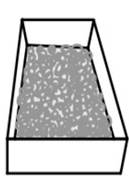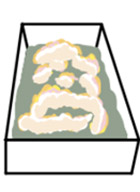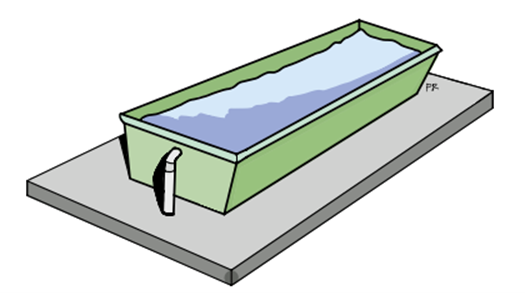Arkansas Extension Small Ruminants
Contact
Dr. Dan Quadros
Asst. Professor - Small Ruminants
Phone: 501-425-4657
Fax: 501-671-2185
Email: dquadros@uada.edu
University of Arkansas System
Division of Agriculture
Cooperative Extension Service
2301 S. University Ave.
Little Rock, AR 72204
10 Ways to Prevent Foot Rot
By Dr. Dan Quadros, UADA Small Ruminants Specialist
Pamela Rogers, UofA graduate student
Foot rot is a highly contagious bacterial infection affecting cattle, sheep, and goats. Caused primarily by Dichelobacter nodosus and Fusobacterium necrophorum, it can lead to major consequences when left uncontrolled.
Foot rot leads to:
- lameness
- hoof damage
- decreased productivity
Contagious foot-rot symptoms include:
- redness
- swelling
- foul odor
- lameness
How do I prevent foot rot on my farm?
- Keep Hooves Clean, Dry, and Trimmed
Moist and dirty environments provide a breeding ground for foot rot-causing bacteria. Regularly cleaning the hooves of all debris will ensure that they are dry and reduce the risk of bacterial growth and infection.
Regular hoof trimming is essential for preventing excessive hoof growth that can lead to trapped moisture and debris.


- Foot Baths
Foot baths with solutions containing disinfectants like zinc sulfate, copper sulfate or formalin can help control and prevent foot rot. However, sheep are sensitive to copper toxicity, so it is recommended to use a zinc sulfate monohydrate solution instead. Both of these solutions kill bacteria and fungi, which reduces the likelihood of infection. Each sheep/goat should stay in the bath for a minimum of 15 minutes each.
Foot Bath Recipe Ingredients:
-Plastic, wooden or metal sealed container
-Zinc Sulfate
-Powder Laundry Detergent
Step 1: Calculate the volume needed by multiplying the following:
Width x length x depth of container in inches. Then, divided by 280 = GallonsStep 2: Now multiply the gallons x 2 = pounds of zinc sulfate needed to create 20% solution.
Step 3: Add a small amount of laundry detergent to the foot bath.
Helpful Tip: Add a layer of gravel to the bottom of the container and old wool to limit splashing and make the foot bath more appealing for animals to step in. After bathing, animals must remain on a firm and clean floor until the hooves are dry.

Add a layer of rocks

Add your foot bath solution

Add a layer of wool
- Avoid Infected Pastures
Identifying and avoiding pastures that have a history of foot rot can significantly reduce the spread of the disease. Conduct field tests such as bacterial culture or PCR to determine the presence of the causative organisms. If positive, keep sheep and goats off the pasture for around 2 weeks to break the cycle of infection. Additionally, selecting dry locations for planting crops can minimize moisture exposure in places where livestock are likely to spend the most time feeding. - Keep High-Traffic Areas Dry
Areas with high animal traffic, like feeding areas and surrounding water troughs, can become damp and muddy, contributing to the spread of foot rot. Constructing concrete slabs or using gravel in such areas can help keep hooves dry and reduce the risk of infection.
- Avoid Overcrowding
Overcrowded conditions can stress animals and create an environment where the disease can spread more easily. Provide adequate space, approximately 2 square meters per sheep or goat, to minimize stress and reduce contact between hooves. - Vaccination
While vaccines for foot rot might not be universally available, checking with local veterinarians or agricultural authorities could provide information on whether such vaccines exist and are effective in your region. - Quarantine and Isolation
When introducing new animals to the herd, quarantine them for 30 days to ensure they are not carriers of foot rot. Similarly, isolate sick animals promptly to prevent the disease from spreading to healthy ones. - Genetics
Foot rot resistance/susceptibility varies among breeds and individuals. It is a heritable trait with low to moderate heritability. Therefore, selection can be used to improve resistance and assist in foot rot control. Estimated breeding values (EBVs) can be calculated after routine hoof scoring of flocks/herds using a simple 5-point scale. Additionally, molecular genetic screening can determine resistance or susceptibility to the disease. - Nutrition
Ensuring proper nutrition, including zinc supplementation, is crucial. Zinc is important for overall health and hoof development. Pregnant animals, in particular, benefit from adequate zinc intake, as it can support proper hoof growth in utero. - Monitor High-Risk Days
Pay attention to weather conditions, especially on hot and wet days. These conditions can promote bacterial growth and increase the susceptibility of hooves to infection. Taking extra precautions during such periods can help prevent foot rot.
What to Avoid:
- overcrowding animals in facility
- unsanitary conditions
- warm and wet locations
- untrimmed hooves
- leaving injuries untreated
Bibliography
Ehrhardt, R. (2020). Tactics to win the battle against Foot Rot. Michigan State University.
Tactics to Win the Battle Against Foot Rot
Zanolari, P., Dürr, S., Jores, J., Steiner, A. and Kuhnert, P. 2021. Ovine Footrot: A Review of Current Knowledge. The Veterinary Journal, 271:105647.
